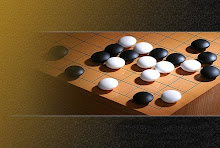 Энэ хүүхэлдэйн кино нь го даамчин хүүхдийн тухай гардаг ба энэ хүүхэлдэй гарснаас хойш япон төдийгүй дэлхийн олон улсын хүүхэд,залуучууд го даам тоглож эхэлсэн байна.Энэ хүүхэлдэйн киног үзснээр го даамны талаар маш ихийг мэдэж авах болно.Тэхлээр энэ хүүхэлдэйн киноны бүх ангийг эндээс
Энэ хүүхэлдэйн кино нь го даамчин хүүхдийн тухай гардаг ба энэ хүүхэлдэй гарснаас хойш япон төдийгүй дэлхийн олон улсын хүүхэд,залуучууд го даам тоглож эхэлсэн байна.Энэ хүүхэлдэйн киног үзснээр го даамны талаар маш ихийг мэдэж авах болно.Тэхлээр энэ хүүхэлдэйн киноны бүх ангийг эндээстатаж аваарай. read more...


![[ext]](http://senseis.xmp.net/images/extlink.gif) BC Card Cup
BC Card Cup





